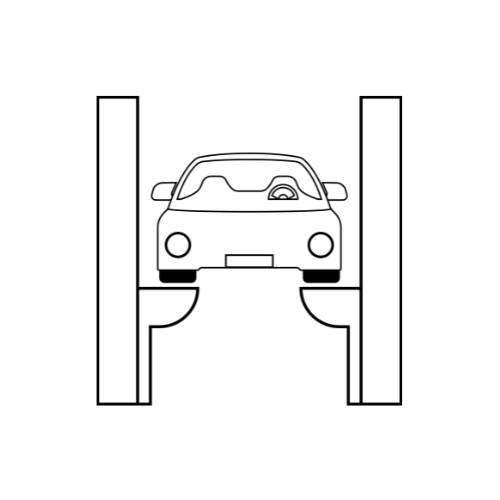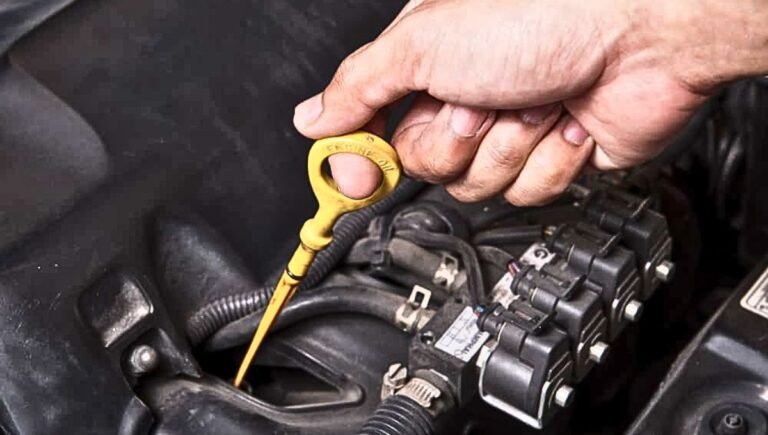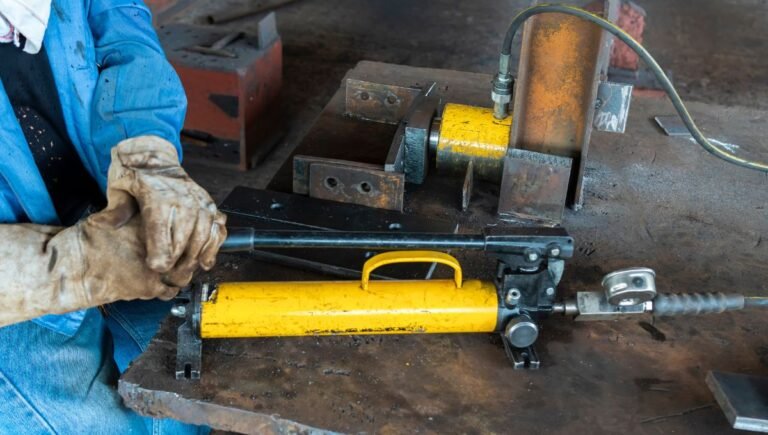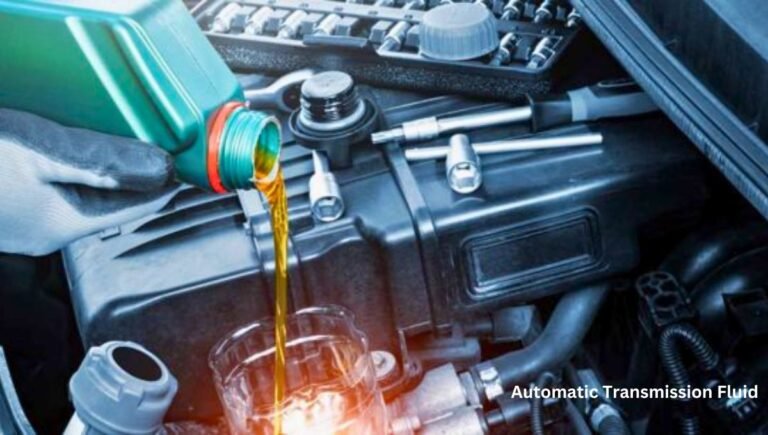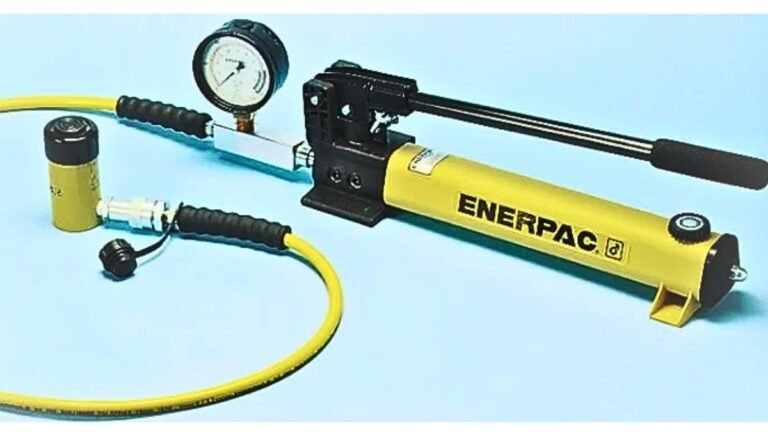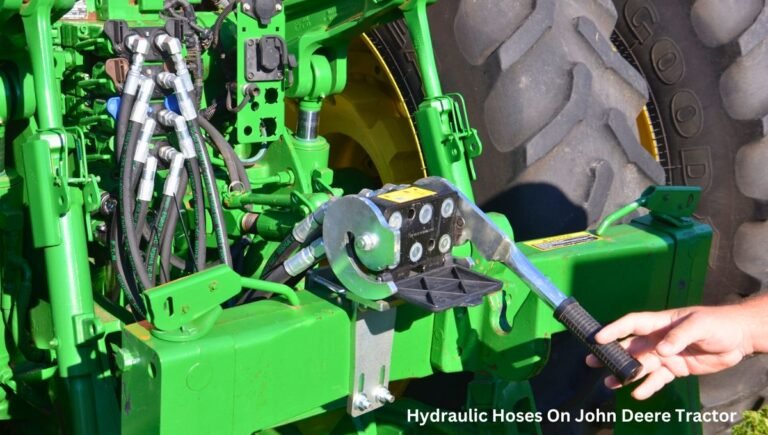How to Remove Air from Tractor Hydraulic System? Quick Guide
To remove air from a tractor hydraulic system, bleed the hydraulic lines and cylinders. Ensure the fluid level is adequate.
Proper maintenance of a tractor’s hydraulic system is crucial for optimal performance. Air trapped in the system can lead to erratic operation and reduced efficiency. Regularly bleeding the hydraulic lines and checking fluid levels can prevent these issues. Use the correct bleeding procedure to ensure all air is expelled.
This process involves opening bleed valves and operating the hydraulic controls. Maintaining clean and adequate hydraulic fluid levels is also essential. Regular inspections and timely maintenance help extend the life of the hydraulic system, ensuring your tractor operates smoothly and efficiently.
Introduction To Hydraulic Systems In Tractors
Hydraulic systems in tractors are vital. They help in lifting, moving, and operating various implements. Understanding these systems is crucial for maintenance and troubleshooting.

Essential Role Of Hydraulics
Hydraulic systems perform several tasks:
- Lifting loads: Hydraulics help lift heavy loads easily.
- Operating implements: Attachments like plows and loaders use hydraulic power.
- Providing power: Hydraulic systems power various tractor parts.
Without hydraulics, tractors would struggle to perform many tasks.
Common Issues With Hydraulic Systems
Hydraulic systems face some common problems:
- Air in the system: Air can cause erratic movements.
- Fluid leaks: Leaks lead to a drop in hydraulic pressure.
- Dirty fluid: Contaminated fluid can damage components.
Regular maintenance helps in preventing these issues.
How to Remove Air from Tractor Hydraulic System
Removing air from the system is crucial. Follow these simple steps:
- Check fluid levels: Ensure hydraulic fluid is at the recommended level.
- Bleed the system: Use the bleed valves to release trapped air.
- Operate the hydraulics: Move the hydraulic implements to remove air pockets.
Repeat these steps until all air is removed from the system.
Signs Of Air Contamination
Air contamination in a tractor’s hydraulic system can cause many problems. Recognizing these signs early is essential for maintaining your tractor’s performance. Below, we will discuss the symptoms and impacts of air in the hydraulic system.
Symptoms Of Air In Hydraulics
Identifying air in the hydraulic system is crucial. Here are some common symptoms of air contamination:
- Erratic Movements: The tractor’s operations become jerky or erratic.
- Strange Noises: You may hear knocking or banging sounds.
- Slow Response: Hydraulic actions become slower than usual.
- Foamy Fluid: The hydraulic fluid appears foamy or milky.
Impact On Tractor Performance
Air in the hydraulic system can severely affect your tractor’s performance. Here are some potential impacts:
| Impact | Description |
|---|---|
| Reduced Efficiency | The tractor works harder, burning more fuel. |
| Increased Wear and Tear | Components experience more friction and wear out faster. |
| Possible System Failure | Severe air contamination can lead to complete hydraulic failure. |
Regularly checking for these signs can help prevent severe damage. Keep your tractor running smoothly by addressing air contamination quickly.
Sources Of Air In Hydraulic Systems
Understanding the sources of air in hydraulic systems is crucial for maintaining your tractor’s performance. Air can cause a variety of issues, from reduced efficiency to potential damage. This section will help you identify where air might enter your hydraulic system and how to prevent it.
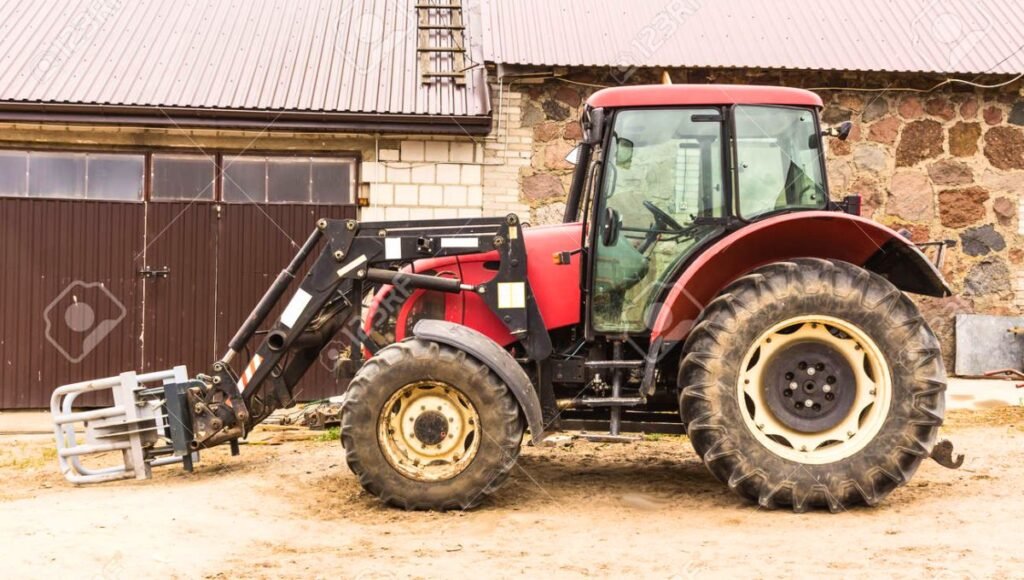
Common Entry Points For Air
There are several common entry points where air can infiltrate your hydraulic system:
- Loose fittings: Ensure all fittings are tight.
- Worn seals: Replace seals that show signs of wear.
- Damaged hoses: Inspect hoses for cracks or leaks.
- Reservoir: Air can enter through the reservoir if it is not sealed properly.
- Pumps and valves: Check for air ingress in pumps and valves.
Preventative Measures
Taking preventative measures can greatly reduce the risk of air entering your hydraulic system:
- Regular maintenance: Perform routine checks on all components.
- Use quality parts: Ensure all parts are of high quality and compatible.
- Proper installation: Follow manufacturer guidelines for installing parts.
- Monitor fluid levels: Keep hydraulic fluid at optimal levels.
- Bleed the system: Regularly bleed the system to remove trapped air.
| Component | Potential Issue |
|---|---|
| Fittings | Loose connections |
| Seals | Wear and tear |
| Hoses | Cracks or leaks |
| Reservoir | Improper sealing |
| Pumps and Valves | Air ingress |
By addressing these common entry points and implementing preventative measures, you can maintain the efficiency and longevity of your tractor’s hydraulic system.
Preparing For Air Removal
To remove air from a tractor hydraulic system is crucial for optimal performance. Before starting the process, proper preparation is essential. This section covers the necessary steps to ensure a smooth and safe air removal process.
Safety Precautions
- Turn off the tractor engine. Ensure the engine is completely off before starting.
- Use protective gear. Wear gloves and safety goggles to protect yourself.
- Ensure the tractor is on a flat surface. This prevents any accidental movements.
- Disconnect the battery. This adds an extra layer of safety.
Tools And Materials Required
| Tool/Material | Purpose |
|---|---|
| Wrenches | To open and close hydraulic lines. |
| Hydraulic fluid | To refill the system after air removal. |
| Rags | To clean up any spills. |
| Container | To catch any fluid that may leak out. |
Step-by-step Air Purge Process
To remove air from your tractor hydraulic system, follow this step-by-step guide to purge air from the system effectively.
Starting The Engine
Begin by starting the engine of your tractor. Ensure the tractor is on level ground. This helps in even distribution of hydraulic fluid. Let the engine run for a few minutes. This warms up the hydraulic fluid. Warm fluid helps in easier air removal.
Cycling The Hydraulics
Next, cycle the hydraulics to remove trapped air. Move each hydraulic control to its full range. For example, lift and lower the loader fully. Repeat this process for each hydraulic function. Do it slowly to avoid sudden movements. This helps in releasing air bubbles trapped in the system.
| Hydraulic Function | Action |
|---|---|
| Loader | Lift and lower fully |
| Bucket | Tilt forward and backward fully |
| Three-point hitch | Raise and lower fully |
Check the hydraulic fluid level after cycling the hydraulics. Air can displace fluid, causing a drop in level. Top up the hydraulic fluid if necessary.
Repeat the cycling process if air is still present. Observe for smooth operation of hydraulics. Once smooth, the air purge process is complete.
Bleeding Techniques For Different Tractor Models
Removing air from the hydraulic system is crucial for optimal tractor performance. Air in the system can cause inefficiency and damage. Different tractor models require specific bleeding techniques to ensure smooth operation.
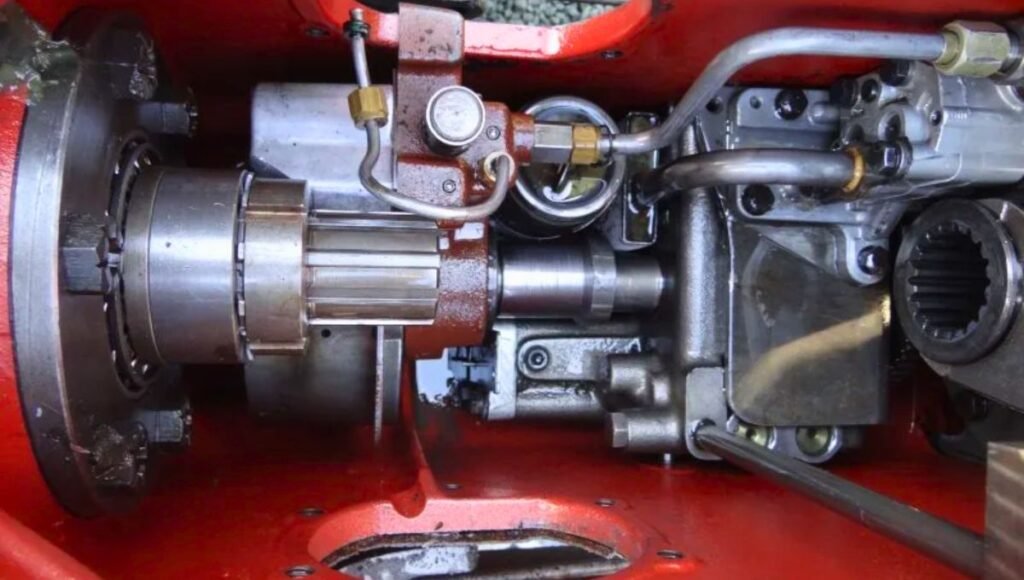
Specifics For Compact Tractors
Compact tractors often have simpler hydraulic systems. Follow these steps to bleed air effectively:
- Park the Tractor: Ensure the tractor is on a flat surface.
- Turn Off the Engine: Safety first. Make sure the engine is off.
- Locate the Bleed Valve: Find the bleed valve on the hydraulic pump.
- Open the Bleed Valve: Slowly open the valve to release trapped air.
- Operate the Hydraulic Controls: Move the hydraulic controls to full extension.
- Close the Bleed Valve: Once air bubbles stop
Troubleshooting Persistent Air Problems
Persistent air in the tractor hydraulic system can hinder performance. Identifying and fixing these issues is crucial. This section will guide you through troubleshooting stubborn air problems.
Identifying Stubborn Air Locks
Stubborn air locks can disrupt hydraulic performance. Here are signs to watch for:
- Erratic hydraulic movements
- Hydraulic fluid foaming
- Reduced lifting power
To identify these stubborn air locks, perform the following steps:
- Check hydraulic fluid levels.
- Inspect for any fluid leaks.
- Examine hydraulic lines for kinks or bends.
Using a clear hose can help you see air bubbles. Attach the hose to the hydraulic system and watch for bubbles passing through. This method is effective in pinpointing air locks.
When To Seek Professional Help
If you can’t resolve the air problem, it may be time to seek professional help. Here are scenarios where professional assistance is necessary:
| Scenario | Reason |
|---|---|
| Continuous air in the system | Indicates a possible deeper issue |
| Repeated fluid foaming | Could be a sign of contamination |
| Hydraulic system overheating | May suggest a serious malfunction |
A professional can conduct a thorough inspection. They have the tools and expertise to diagnose and fix complex hydraulic issues. Don’t hesitate to reach out when the problem persists.
Maintenance Tips To Prevent Future Air Locks
Keeping your tractor’s hydraulic system in top condition is crucial. Regular maintenance helps avoid air locks, ensuring smooth operation. Follow these tips to maintain your hydraulic system and prevent future issues.
Regular Hydraulic System Checks
Performing regular checks on your hydraulic system is important. Inspect hydraulic hoses for any signs of wear or damage. Check fluid levels frequently to ensure they are within the recommended range.
Make sure to clean the system components to remove dirt and debris. Schedule routine inspections and keep a log of maintenance activities. This will help in identifying any potential problems early.
Best Practices For Hydraulic Health
Following best practices can greatly improve your hydraulic system’s health. Use only high-quality hydraulic fluids. Avoid mixing different types of fluids as it can cause issues.
Ensure proper ventilation in the hydraulic reservoir to prevent air entry. Tighten all fittings and connections to avoid leaks. Replace filters regularly to keep the system clean and efficient.
Implement a proper hydraulic system maintenance schedule. Train operators on correct usage and maintenance procedures. This ensures everyone knows how to keep the system in good shape.
| Task | Frequency |
|---|---|
| Inspect Hoses | Monthly |
| Check Fluid Levels | Weekly |
| Clean Components | Monthly |
| Replace Filters | Quarterly |
How Do You Bleed A Tractor Hydraulic System?
To bleed a tractor hydraulic system, locate the bleeder valve, then slowly open it. Allow air to escape until only fluid flows. Close the valve securely.
Why Is My Tractor Hydraulics Not Working?
Tractor hydraulics may not work due to air in the system, low fluid levels, or a clogged filter. Check and address these issues.
What Are Signs Of Air In Hydraulic System?
Signs of air in a hydraulic system include noisy operation, erratic movements, and reduced efficiency. Check for these symptoms regularly.
How Often Should You Check Hydraulic Fluid?
Check hydraulic fluid levels every 50 hours of operation or as specified in your tractor’s manual. Regular checks ensure optimal performance.
Conclusion
Mastering the removal of air from your tractor’s hydraulic system boosts its efficiency and performance. Follow these steps to ensure smooth operations and extend your equipment’s lifespan. Regular maintenance and proper bleeding techniques are key to avoiding hydraulic issues. Stay vigilant and keep your tractor running at its best.
